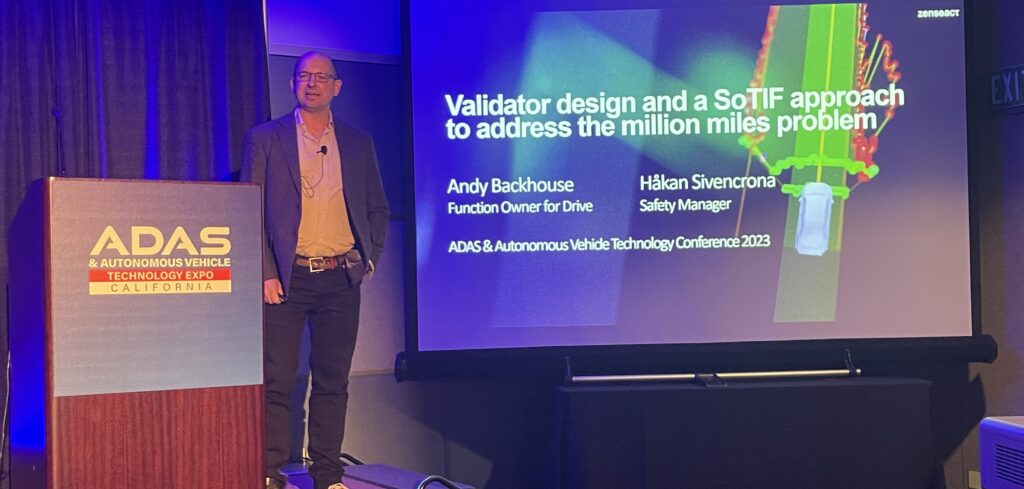Beyond the free-to-attend exhibition, there is also an intensive, in-depth conference (rates apply) taking place in Santa Clara, as part of ADAS & Autonomous Vehicle Technology Expo California. Featuring over 70 expert speakers, including organizations such as Waymo, Zoox and Torc Robotics, it is an ideal platform for key ADAS engineers and automated driving developers to share their latest insights and program updates.
The first morning of the conference included a fascinating presentation from Zenseact’s chief safety officer Håkan Sivencrona and the company’s collision-avoidance threat-assessment technical specialist Andrew Backhouse on how validator design and SoTIF processes can help address the million miles problem.
“The million miles problem is not unique to AD design. It is an issue for ADAS too,” Backhouse said. “Autonomous emergency steering (AES) and autonomous emergency braking (AEB) have the potential to cause harm and these faults cannot be addressed by functional safety alone. Perception and decision algorithms that are insufficiently robust can lead to hazardous situations. We presented validator concepts that can be used to design more robust ADAS. We also presented how one can iterate the design to minimize the risk of functional insufficiencies and build an argument to motivate that the systems are safe.”
In particular, Backhouse underlined that understanding how the duration of an unintended behavior affects risk is an important consideration when designing an active safety system: “The slower that risk increases, the more opportunity there is to correct behavior before it leads to unacceptable risk,” he said.
“We presented an approach using validators to retrospectively judge whether correct decisions have been made. During the operational phase it is necessary to have a field monitoring process in place to monitor any residual insufficiencies. When selecting which of the incoming events to analyze in depth, the duration of the unwanted behavior and the duration of functional insufficiencies should be one of the key selection criteria.”


